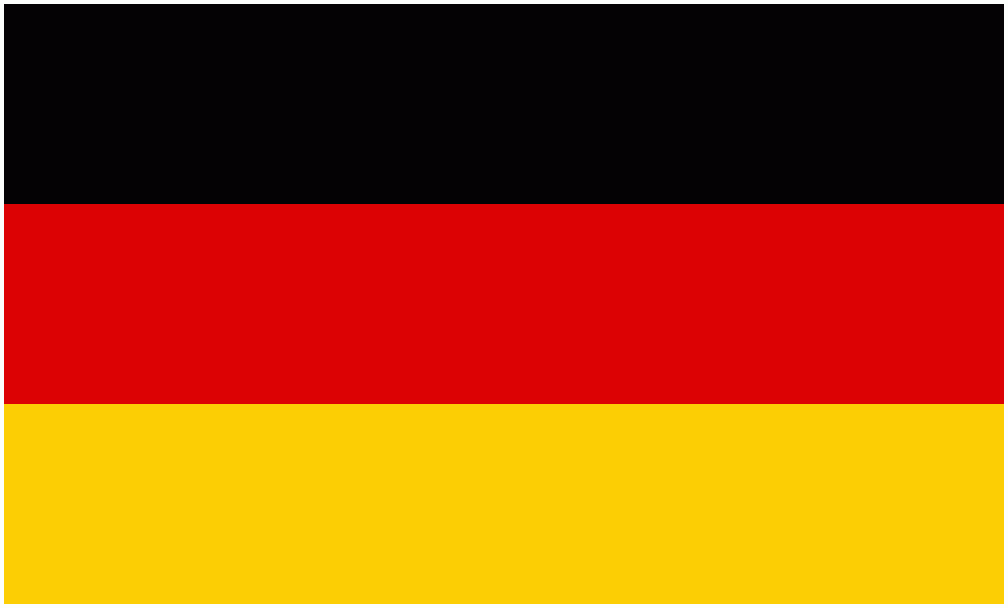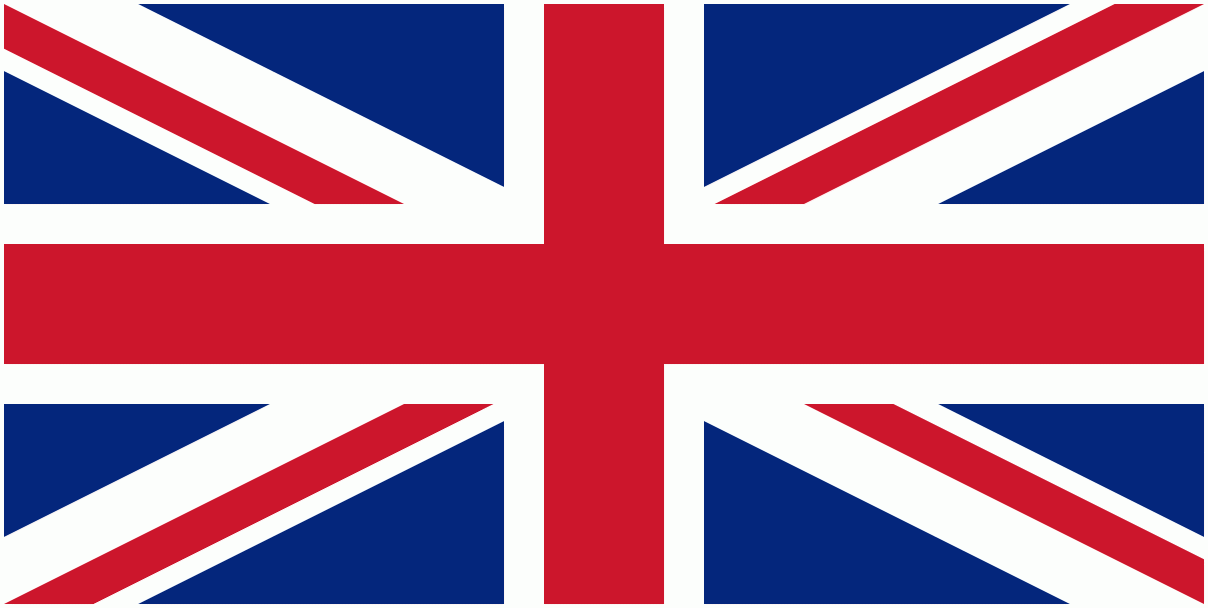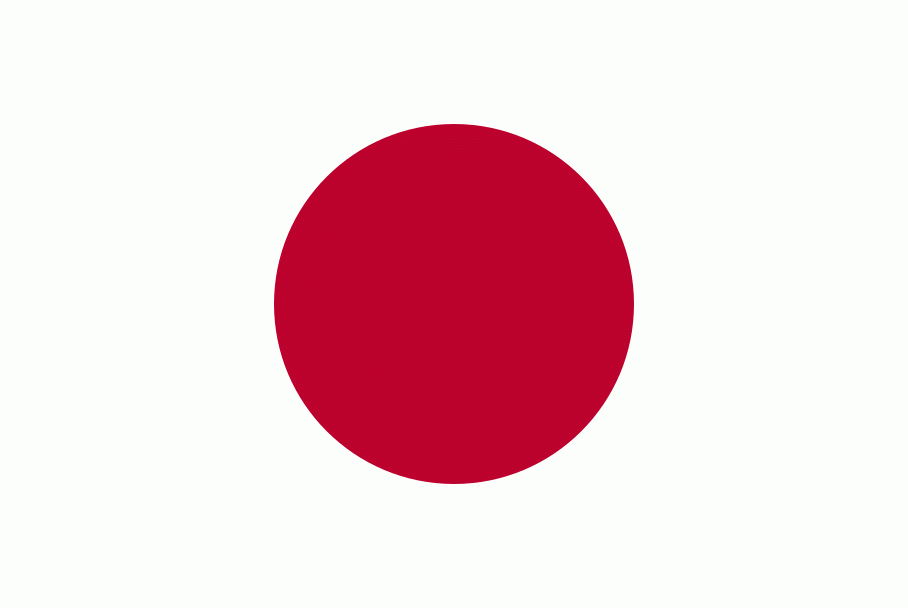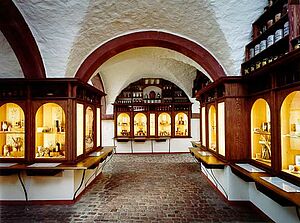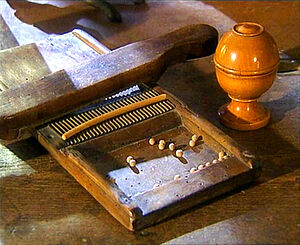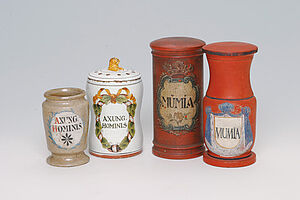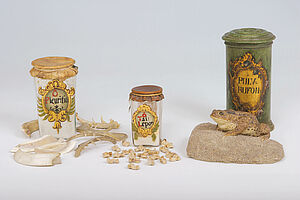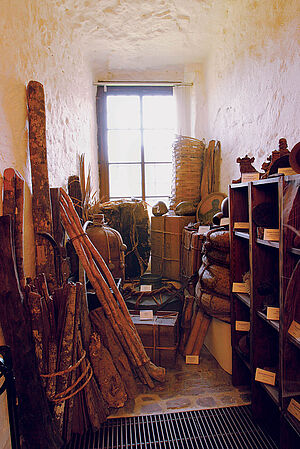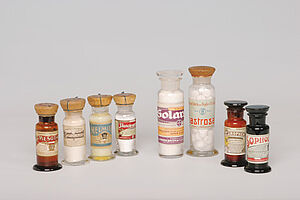The Medicament (materia medica)
From the “materia medica” to the modern medicament
Room 5 presents the next huge subject area. Supported by an exceptional collection of precious drugs from the 17th up to the 19th century, here you‘ll find the foundation of pharmaceutical production itself. In 28 show cases we are exposing more than 1000 exhibits of raw materials representing the range of medical substances of this period: The “materia medica”.
Be reminded of long forgotten miracle cures in this context, like unicorn, mummy, or the universal remedy called “theriac”, containing opium and more than 200 other ingredients.
This impressive collection vividly takes the visitor back to times long gone by. We symbolically divided the room into the three “Kingdoms of Nature” (regna naturae) according to the historical classification: the Kingdoms of Minerals, of Plants, and of Animals.
An application of plant, mineral, or animal substances nowadays might occur peculiar to us but it was philosophically integrated into a closed, coherent medical system corresponding to the medical and pharmaceutical knowledge standards of the time.
In many cases, also ways of trade and delivery were quite difficult, too, since most of those raw materials originated from distant countries and had to be brought all over to the different dispensaries.
In order to ease the taking, the medicaments were handed out to the patients in different forms – tablets weren’t in use until the middle of the 19th century, and ancient plasters couldn’t differ more from today’s.
This section of our museum literally shows the “forms of medicaments” and the pharmacist’s original equipment to manufacture them - like different machines to make a plaster or to gild pills illustrate the different means of production.
Comparing and connecting medical raw materials used in the past to modern medical treatments however prove that all medicaments of the 21st century couldn’t have been developed without the courageous experiments and the ambitious experiences made by our ancestors, their knowings and their discoveries.
Still, even if various of the old drugs and medical substances are not in use any longer, parallels between modern medicaments and historical remedies, for example in plant origin, is obvious.
With the Merck Collection beeing exposed in a large window recess we are able to present a rich combination of raw drugs imported from overseas by the Merck Company, still young at that time, in order to analyze them about their medical substances, and to synthesise their curing substances accordingly afterwards.
Hence, this fascinating collection does not only represent the interesting development from a private pharmacist’s shop – like the Angel Pharmacy at Darmstadt – towards a growing pharmaceutical industry – such as the E. Merck Company KG – but it also attracts us with its exotic raw ingredients as well as the looks of their extraordinary and sometimes quite exotic packaging.
Finishing the overall view to medical drugs and their different forms of application, the museum tour leads us into areas with special topics.

